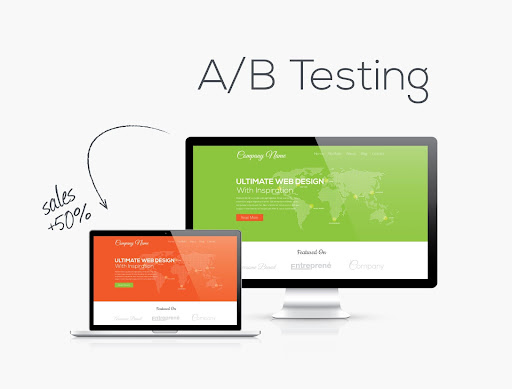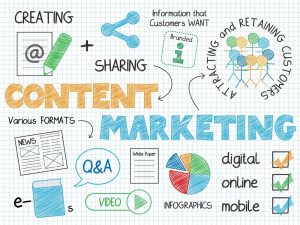Welcome email flows — email series or drip campaigns — are automated email sequences that introduce new subscribers to your brand and encourage engagement.
Crafting an effective welcome flow can be crucial for establishing a solid first impression and nurturing relationships with your subscribers. It’s their first line of contact with you outside your website, so it’s essential to get it right.
But how many emails should you include in your welcome flow? Are fewer emails more effective, or should you aim to provide more value with an extended series? Is there an exact number you should go for?
In this blog post, we’ve consulted with our email marketing experts and compiled research to help answer this question and provide insights and best practices for creating an effective welcome flow for your business.
Keep reading to learn everything you need to know about welcome email flows.
The Role of Welcome Emails in Email Marketing
A welcome email is crucial to a customer’s journey because it sets the tone for their entire experience with your brand. It’s the first communication a customer has with your business after they’ve subscribed to your email list or made a purchase, so it’s important to make a good impression right from the start.
A welcome email can improve customer engagement by establishing trust and credibility with your audience by providing more information about your brand, product, or service. By doing so, you can set the expectation for the rest of their experience with your brand.
In addition, a welcome email can help you achieve higher open rates and click-through rates, which are important metrics for measuring the effectiveness of your email campaigns. (We’ll discuss these terms in more detail later in this blog.)
This is because welcome emails tend to have higher engagement rates than other types of promotional emails, as subscribers expect to receive them right after signing up.
Furthermore, a welcome email can improve conversions by encouraging subscribers to take specific actions, such as making a purchase, downloading an e-book, or subscribing to your blog. Both direct and transitional calls to action can be effective with welcome flows.
By providing subscribers with a clear call-to-action (direct or transitional) in your welcome email, you have a greater chance of nurturing the relationship and moving them further along the conversion funnel.
Here are a few examples of successful welcome email campaigns to get ideas flowing:
- Uber uses a simple yet effective welcome email that introduces users to their app and how to use it. The email includes a CTA that leads users to order their first ride, encouraging them to take immediate action. This works well for users who downloaded the app for that very reason.
- Casper takes an unconventional approach to their welcome email, with a humorous tone and personalized content. They use a “Choose Your Own Adventure” format to guide users to different website sections, including their products, blog, and customer reviews. This results in a highly engaging and personalized welcome experience for each user.
- Birchbox personalizes its welcome email with the subscriber’s name and a list of the products they can expect to receive in their first box. This creates a sense of excitement and anticipation for the customer while reinforcing the value of the subscription.
The email also includes information about the Birchbox community and social media channels, encouraging subscribers to connect with the brand. - Airbnb: Airbnb’s “Welcome to Airbnb” email briefly introduces the brand, highlights the benefits of its service, and encourages further exploration on its website.
- Asana: Asana’s welcome email provides a step-by-step guide to help new users get started with their project management tool, including links to video tutorials and resources for support. For many new users of any product, it can feel overwhelming.
You might not know how to get started, making a welcome email like this a sigh of relief for many new users. - Grammarly: Grammarly’s welcome email confirms the user’s registration and invites them to download the Grammarly extension, which provides real-time writing suggestions and error detection.
- Headspace: Headspace’s welcome email asks users about their meditation experience and provides personalized recommendations for their first meditation session. The email also includes a free meditation guide which users can download as a welcome gift.
- Medium: Medium’s welcome email provides a brief overview of the platform and encourages users to explore a range of content based on their interests. The email also includes a call-to-action for users to start writing their own stories on the platform.
By implementing personalization, clear CTAs, and engaging content, these brands can create welcome emails that effectively introduce subscribers to their brand and encourage them to take action.
Now, while looking at examples of other businesses is great, an essential part of this blog is discussing best practices for creating a welcome flow.
Best Practices for Creating a Welcome Flow
When creating a welcome flow, it’s important to consider best practices for engaging new subscribers and converting them into loyal, repeat customers. By following these key best practices, you can create a welcome flow that establishes a strong relationship with subscribers from the very beginning.
This section will explore the best practices for creating a welcome flow that keeps your subscribers engaged and moving along the conversion funnel.
- Determine how many emails should be in the flow: While no magic number works for every brand, most businesses will succeed with a welcome flow of five emails. This number comes from our email marketing director, who we’re chatting with later in this blog.
- Create a series of relevant, engaging emails: Each email in your welcome flow should offer more value than the last and be tailored to the specific interests of your subscribers.
Depending on your audience type and the goals of your business, welcome emails could feature product recommendations, introductory content to blogging, or tutorial content on the use of your product. - Length matters: The length of a welcome email is an important factor; it shouldn’t be too long. A good welcome email should be brief and to the point but also informative, addressing the subscribers’ need to sign up. Keeping the length to a healthy ratio of copy, visuals, and multimedia is ideal.
- Personalize your messages: Personalization can help build stronger connections with new subscribers and enhance your emails’ relevancy. Using their names and offering personalized product recommendations from previous purchase data can help align with their needs.

- Optimize for mobile: As more people access emails through their mobile devices, it is essential to optimize welcome email campaigns for ideal mobile readership.
- Design your emails: A well-designed welcome email has a greater chance of capturing the subscriber’s attention. It is recommended that visuals that reinforce your brand identity are made available to new subscribers, such as having a branded logo with a good copy tone.
- Include social media links: A quick and easy way to connect with your new subscribers is by including social media links in your welcome email. Including icons for users to click on offers an easy way to engage with your brand without making a commitment they might not be ready for quite yet.
By following these best practices, you can create a welcome flow that engages your audience, encourages conversions, and sets a positive tone for your relationship with subscribers.
Testing and Optimizing With Metrics
Testing and optimizing are essential in creating a successful welcome flow. This process can help identify areas of improvement and allow you to make data-driven decisions to optimize the subscriber journey.
Metrics used to track optimization may vary depending on the brand and what goals it aims to achieve. But in general, these metrics include open rates, click-through rates (CTR), conversion rates, average revenue per user (ARPU), unsubscribe rates, etc.
Open Rate
An email open rate is a metric used to measure how many subscribers actually open an email campaign sent to them. The open rate is calculated by dividing the number of unique opens by the number of emails sent, expressed as a percentage.
It’s worth noting, however, that open rates are not always 100% accurate, as they rely on a small piece of code embedded in the email, which may not load for all recipients depending on their email settings.
Despite this limitation, open rates are still an important metric as they indicate how effective the email subject line, preheader text, and sender name are in terms of capturing the subscriber’s attention and driving them to interact with the email campaign content.
Email marketers often use open rates to measure a campaign’s success and inform future strategies. A high open rate can indicate a successful email campaign, whereas a low open rate may indicate that a change in strategy is necessary, such as improving the sender name, content, subject lines, and timing of email campaigns.
Click-Through Rates (CTR)
An email click-through rate (CTR) is a metric used to measure how many subscribers clicked on one or more links within an email campaign, usually expressed as a percentage. The click-through rate is calculated by dividing the number of clicks on a link in the email by the number of emails sent and multiplying this by 100 to get the percentage.
The click-through rate is crucial because it indicates subscribers’ engagement and interest in your email content. A high click-through rate means subscribers receive value from the email campaign and are willing to engage and act.
Click-through rates can also help identify areas for improvement in the email campaign, such as the placement of links, the relevance of content, and the calls-to-action (CTAs) used. Measuring click-through rates can help businesses optimize their email campaigns to improve engagement and increase conversions.
Conversion Rates
An email conversion rate is a metric that measures the number of subscribers who complete the desired action after clicking on a link in an email campaign. The action could be anything from making a purchase to signing up for a newsletter or filling out a form.
The email conversion rate is usually expressed as a percentage, calculated by dividing the number of subscribers who completed the desired action by the total number of clicks on the link. For example, if an email campaign generated 100 clicks, out of which ten translated into purchases, the email conversion rate would be 10%.
This metric is one of the most important for businesses as it determines how effective the email marketing campaign is in achieving desired outcomes.
Businesses can determine which email campaigns are most effective in generating leads, sales, and revenue by measuring email conversion rates. This information can be used to refine email campaigns to improve conversion rates and ultimately increase ROI.
Average Revenue Per Use (ARPU)
Average revenue per user (ARPU) is a metric used to calculate the average revenue generated by each business subscriber over a specific period, usually per month or year. ARPU is calculated by dividing the total revenue generated by the number of subscribers.
ARPU is an important metric for businesses engaged in email marketing or subscription-based services. It helps companies to understand how much revenue they are generating on average from each subscriber and allows them to tailor their marketing strategies and campaigns accordingly.
ARPU can also help businesses track revenue growth, identify trends, and make informed decisions about pricing, customer acquisition, and customer retention strategies.
For example, an email marketing campaign for an e-commerce store may generate a certain amount of revenue over a month, and dividing that revenue by the number of subscribers will give the ARPU.
From there, the business can determine whether to focus on new customer acquisition or retention and upselling existing customers to increase ARPU and overall revenue.
Unsubscribe Rates
Unsubscribe rates are an important metric to track in email marketing because they can provide insight into the relevancy of an email campaign for subscribers. A high unsubscribe rate may indicate that subscribers are no longer interested in the content or that email frequency and timing is inappropriate.
If many subscribers unsubscribe from email campaigns, it is a sign that the email marketing campaign needs improvement. Analyzing and addressing the reasons behind high unsubscribe rates can help businesses improve email content, target the audience, and improve the overall value of the email campaign.
Additionally, in some countries, legal requirements govern email marketing, including the need to provide a clear and easy way for subscribers to opt out of receiving future emails from the business. Failure to comply with these laws can result in legal action, which can harm the reputation and financial position of the business.
So, measuring unsubscribe rates is essential to effectively manage email marketing campaigns, improve relevancy and value, ensure compliance with legal and ethical principles, and preserve brand reputation.

A/B Testing
A/B testing is an important part of optimizing a welcome flow. By creating two variations of an email — control and variation — it is possible to see what changes have the most significant impact on engagement rates and the long-term success of a campaign.
For example, you may want to test your email’s subject line, copy tone, images, or CTA offer. Running an A/B test campaign can help to identify the most successful versions of the elements, allowing future email campaigns to use the most successful format.
Additionally, A/B testing helps to avoid assumptions about what a subscriber wants or needs. It provides more accurate results and can help optimize welcome flows to accommodate the different preferences of the subscribers. By analyzing data generated through experimentation, brands can adjust their welcome flow to improve performance.
An Expert’s Opinion on Welcome Flows
As we mentioned earlier, we recommend having five emails in a welcome flow. We asked our email and automation director, Becca, for more insight into why five emails work for most businesses.
The first email aims to introduce the brand, deliver the pop-up incentive, and direct customers to the site. “This email should be short and simple,” Becca says, “with the focus being on the incentive. There should also be a section that highlights the company.” Examples of this include the company’s mission, a where to start/explore guide, value props, etc.
The second email is meant to make the reader feel emotionally invested in the company. This is a good place to highlight value propositions. What makes your company different? Why should the reader care? Here is where you can share your brand’s story or even introduce the founder behind the company.
For email #3, Becca says, “We should be pushing social proof to incentivize the customer to create a purchase. This could be presented in the form of reviews, pictures of real customers using the product, before and afters, or even a case study. We want to show that people like, use, and are happy with the product.”
Ultimately, the goal is for the reader to picture themselves as the user. This is a great email to highlight popular products.
For email #4, you’ll want to encourage the customer to connect with you on a different platform so you can continue to reach them. Because they still haven’t made their first purchase, this is a security measure in case they choose to unsubscribe. It’s a way to still stay in touch with them.
This email should encourage people to connect to some kind of company community, whether that’s social media, an app, or a private online group.
Finally, for email #5, “this email should only focus on the incentive with no distractions. Our only goal here is to create urgency and get the customer on the site to complete their first purchase.” Becca also encourages a higher discount rate with this final email to help push that sale.
These five emails will hopefully engage with your customer on a level that allows them to interact with your brand and leads to them making a purchase. Of course, not everyone will make a purchase, but with the appropriate welcome flow, you’ll be well on your way to bringing new customers into your community.
Mistakes to Avoid in a Welcome Flow
As you know by now, a welcome flow is a series of emails that businesses send to new subscribers to introduce them to their brand, products, and services.
And while we’ve discussed what to include in your welcome flow, we thought it would be wise to include what not to include. Indeed, there are some mistakes you can make when emailing new subscribers.
Here are a few mistakes that should be avoided in a welcome flow:
- Overwhelming subscribers – Avoid sending too many emails within the welcome flow, as this could overwhelm subscribers and cause them to lose interest. Instead, maintain a balance between providing useful information and avoiding information overload.
- Not personalizing the content – Personalization is key to connecting with subscribers. Avoid generic content that doesn’t speak directly to subscribers’ interests, needs, and preferences. Instead, personalize the content based on the subscribers’ previous engagement with the brand.
- Focusing too much on sales – While it’s important to highlight your product and services, avoid making the welcome flow too sales-driven. Instead, focus on building a relationship with subscribers and providing them with value.
- Not optimizing for mobile – A large percentage of subscribers open emails on their mobile devices, so make sure the welcome flow is mobile-friendly, with easy-to-read content and clear calls-to-action.
- Not having a clear call-to-action – Each email within the welcome flow should have a clear and actionable CTA. Make sure it’s clear what you want subscribers to do and what benefit they will receive by clicking the link.
- Not segmenting the audience – Not all subscribers are the same, so avoid sending the same welcome flow to everyone. Segment your audience based on their interests, demographics, and previous engagement, and tailor the welcome flow accordingly.
By avoiding these mistakes in a welcome flow, you can build trust and engagement with your subscribers and turn them into long-term customers.
Frequently Asked Questions
Q: What is a welcome email flow?
A: A welcome email flow is an automated sequence of pre-written emails sent to new subscribers to introduce them to your brand, provide relevant information, and encourage further engagement.
Q: What should be included in a welcome flow?
A: A welcome flow should provide a brief introduction to the brand, highlight the benefits of subscribing, offer valuable and relevant content, and provide clear calls to action. You should also create personalized content based on your subscriber’s preferences and behavior, as this should increase engagement.
Q: How many emails should a welcome flow have?
A: The number of emails in a welcome flow depends on your business and the purpose of the emails, but we generally recommend five emails.
Q: How often should welcome flow emails be sent?
A: You want to engage your subscribers without overwhelming them. We recommend spacing the emails out and ensuring the content is relevant and timely. However, newer subscribers may forget about your business or lose interest if you go too long between emails. It’s a fine line that an email marketing specialist can help you navigate.
Q: What are some best practices for welcome flows?
A: Some best practices for creating effective welcome flows include being concise and relevant, personalizing the content, using clear CTAs, and providing value to the subscribers. Additionally, it is important to test the flow, optimize it based on the subscribers’ behavior, and analyze the results.
Q: Should the welcome email be sent immediately after sign-up?
A: Sending the first welcome email immediately after sign-up can increase engagement and provide a positive first impression. However, some businesses may prefer to wait a few hours or even a day to ensure that the subscriber is more interested and engaged with the brand.
Q: How can businesses optimize the welcome flow for mobile users?
A: Mobile optimization is crucial for effective welcome flows since many subscribers may use mobile devices to read emails. Some ways to optimize welcome flows for mobile users include using responsive design, keeping the email copy short, and making CTAs clear and easy to click.
Q: Can businesses use welcome flows for other types of subscribers?
A: Yes, businesses can use welcome flows for other types of subscribers, such as customers who have made a purchase or users who have signed up for a free trial. These flows can provide relevant information, highlight the brand’s values and services, and encourage repeat purchases or conversions.
Create Your Email Flow With REVITY
Ready to create a winning welcome flow that engages your subscribers and drives customer loyalty? Contact Revity online or at 801-877-0608 today! Our team of experienced marketers can help you craft an effective welcome flow tailored to your business needs and objectives.
Let’s work together to create a personalized, relevant experience for your subscribers and drive results for your business. Get in touch with us now to learn more!
































